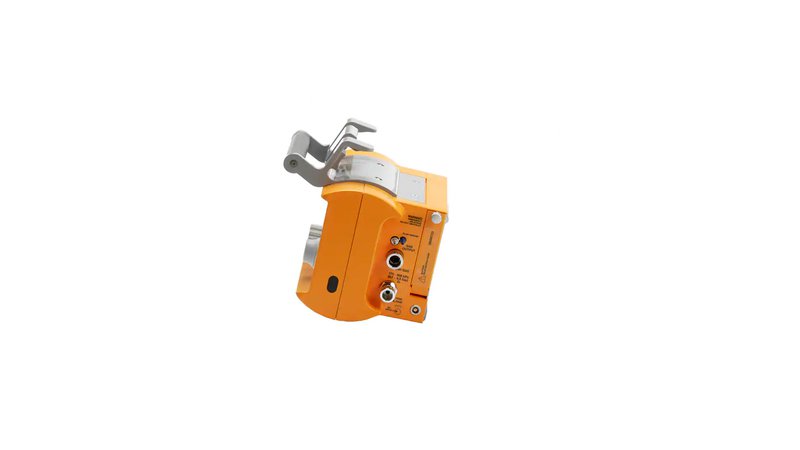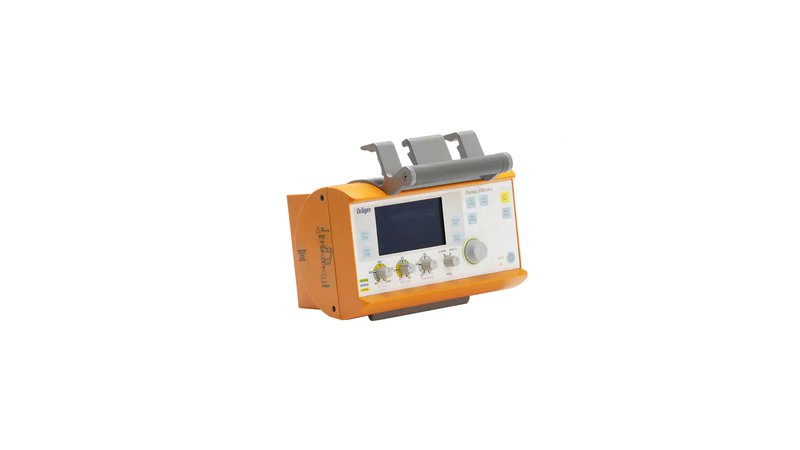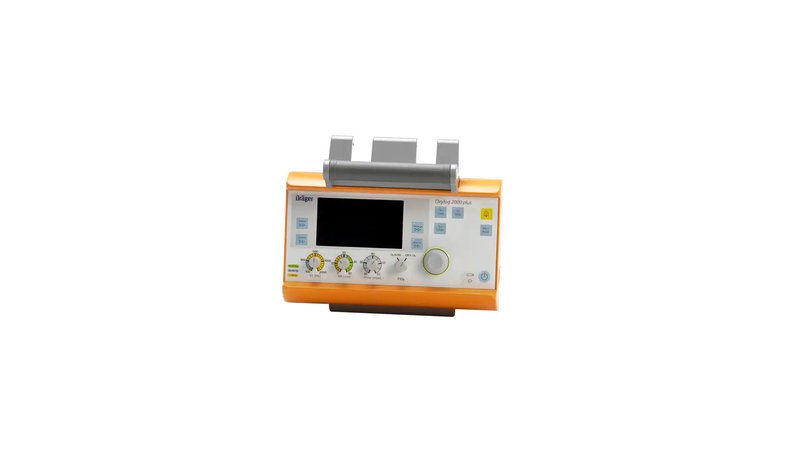Аппарат ИВЛ Draeger Oxylog 2000 plus
Dräger Oxylog 2000 plus ventilator
An artificial lung ventilation apparatus is a medical device that is designed to force the supply of a gas mixture into the lungs in order to saturate the blood with oxygen and remove carbon dioxide from the lungs. Oxylog 2000 Plus - Standard class transport ventilator for emergency respiratory support by ambulance teams and ventilation for intrahospital transport. As an improved version of the Oxylog 2000, the Oxylog 2000 Plus ventilator represents a new stage in the development of ventilation technology in the field of emergency medicine (ambulance service, emergency departments). The device has the ability to perform mandatory ventilation, as well as work in the modes of auxiliary ventilation and respiratory support, which allows you to adapt ventilation to the needs of the patient.
Features
- Designed for emergencies. In emergency situations, reliability and simplicity, intuitive ease of use are key success factors in providing assistance. The Dräger Oxylog 2000 Plus is specifically designed to provide emergency ventilation;
- Everything you need for artificial ventilation. The Oxylog 2000 Plus has not only volume-controlled ventilation modes, but also invasive and non-invasive ventilation modes. Pressure support and non-invasive ventilation modes help patients with initial manifestations of respiratory failure and prevent intubation at the earliest stage;
- Intuitive user interface. The large display clearly shows all important information on clinical parameters, air pressure and other settings, allowing you to quickly assess the patient's condition in difficult situations. Intuitive switches allow you to start working in a matter of seconds after turning on the device;
- Rugged, compact and mobile. Because the Oxylog 2000 Plus is easy to carry and install, you can always take it with you. It is made of extremely reliable and durable materials and is able to withstand the most severe operating conditions. Built-in battery provides up to 4 hours of operation during transportation;
- Standard equipment. The Oxylog 2000 Plus system uses the same standard reusable and disposable hoses as the Oxylog 3000 Plus, making it easier to keep track of supplies and equipment.
Advantages
- The combination of controlled and assisted ventilation provides the flexibility needed to adapt to the needs of the patient;
- One-stop solution optimizes quality of care and patient comfort for both invasive and non-invasive procedures;
- Intuitive user interface helps control life-threatening situations;
- Reliability and efficiency thanks to the use of a proven platform;
- Ergonomic transport solutions will help reduce the labor intensity of work;
- DrägerService support, as well as training and educational materials;
- Ensure that you get the most out of your device.
Monitored parameters
- In IPPV/SIPPV modes: flow, peak and mean pressure, PEEP, inspiratory time, frequency;
- In SIMV modes: flow, peak and mean pressure, PEEP, tidal volume, frequency;
- In CPAP mode: CPAP pressure, frequency, tidal volume;
- Alarms: Low gas supply pressure, low and high airway pressure, patient circuit leak, apnea, high respiratory rate.
- Dimensions - (W x H x D) 215 x 90 x 215 mm (excluding handle)
- Weight - 5.4 kg
Gas supply
- Drive gas - medical grade O2 or medical grade compressed air
- Gas supply parameters 2.7 - 6 atm / up to 100 l / min
- Gas consumption for pneumatic actuator - 0.1 - 0.5 l / min
- Ventilation mode
- VC-CMV
- VC-AC
- VC-SIMV
- SpnCPAP
Options
- PS ventilation and NIV (mask) ventilation
- Apnea ventilation (automatic activation of volume-controlled mandatory ventilation when spontaneous breathing stops)
- Special features - rate control, constant tidal volume
- Respiratory rate setting - 2 to 50 ± 1/min (VC-SIMV) 5 to 50 ± 1/min (VC-CMV, VC-AC) 12 to 50 ± 1/min for Apnea ventilation
- Tidal volume Vt - 100 to 2000 ml BTPS*
- Inspiratory to expiratory time ratio I:E (for VC-CMV, VC-AC modes) - 1:4 to 3:1
- Inspiratory time Ti (for VC-SIMV, VC-SIMV/PS modes) 0.2 to 10 seconds
- Fraction of inhaled O2 - switch in position “Air Mix”, FiO2 ~ 40% ** switch “No Air Mix”, FiO2 = 100% **
- PEEP - 0 - 20 mbar (cm H2O)
- Trigger sensitivity (flow) - 3 - 15 l/min
- Pressure support ΔPsupp - 0 – 35 mbar (cm H2O) relative to PEEP, 3 positions of flow rise level
- Maximum inspiratory flow - 100 l/min (external gas pressure > 350 kPa (3.5 atm)), 80 l/min (external gas pressure < 350 kPa (3.5 atm))
- Measured values on the display - VTe, MVe, MVespon, RR, RRsp, PEEP, Pmean, PIP, Pplat, O2
- Display - Electroluminescent, resolution: 240 x 128 pixels, size 108 x 56 mm
Power supply
- Input voltage - 19V±0.5V DC
- AC/DC adapter - Input ~100 to 240 V, output 19 V DC
- DC/DC converter - Input 12/24/28 V DC, output 19 V DC
- Battery type - Li-Ion
- Autonomous operation (full charge), typical operation - 4 hours
- Battery Charging - 5 hours
Monitoring
- Minimum inlet gas pressure < 2.7 atm
- High airway pressure (Paw high) - 20 to 60 mbar
- Low airway pressure (Paw low) - difference between inspiratory and expiratory pressure < 5 mbar or set pressure not reached
- Apnea Interval (Tapn) - 15 to 60 seconds
- Leakage - VTe less than VTi by ~40%
- High respiratory rate - rapid spontaneous breathing of the patient
Operating conditions
- Temperature -20°C to 50°C
- Ambient pressure - from 570 to 1200 hPa
- Relative humidity - from 15 to 95%
- Electrical Compatibility EMC - Complies with ICE/EN 60601-1-2:2001 and ISO 10651-3
- Aircraft use complies with RTCA DO - 160D sections 7, 8 & 21
- Impact Resistance - Meets MIL STD 8.10F Method 514.5
- Classification according to MDD 93/42/EEC - Class IIb
- UMDNS Code - 18-098











